Abstract
The in vitro activity of 19 cephalosporins against 105 clinical isolates of Staphylococcus aureus and S. epidermidis was determined by using a heavy inoculum, i.e., 108 to 109 organisms per ml, to maximally challenge the antibiotics. The anti-staphylococcal activities of cephaloridine and 87/312 were consistently decreased by the use of a heavy inoculum when compared with the activity obtained with two less-concentrated inocula. The activity of most of the other compounds was also decreased with the use of a heavy inoculum, but this was observed only with selected isolates. Cephapirin, cephalothin, and cefazaflur were the most active drugs against the methicillin-susceptible isolates. Cephaloridine, cefamandole, cefazaflur, and 87/312 had substantial activity against methicillin-resistant staphylococci even with heavy inocula. With the exception of cefaclor against S. aureus, the orally absorbed cephalosporins were generally one-half to one-sixteenth as active as the parenterally administered cephalosporins. The median minimal inhibitory concentrations of five of the 12 parenteral cephalosporins were lower with the methicillin-susceptible S. aureus than with the methicillin-susceptible S. epidermidis strains.
Full text
PDF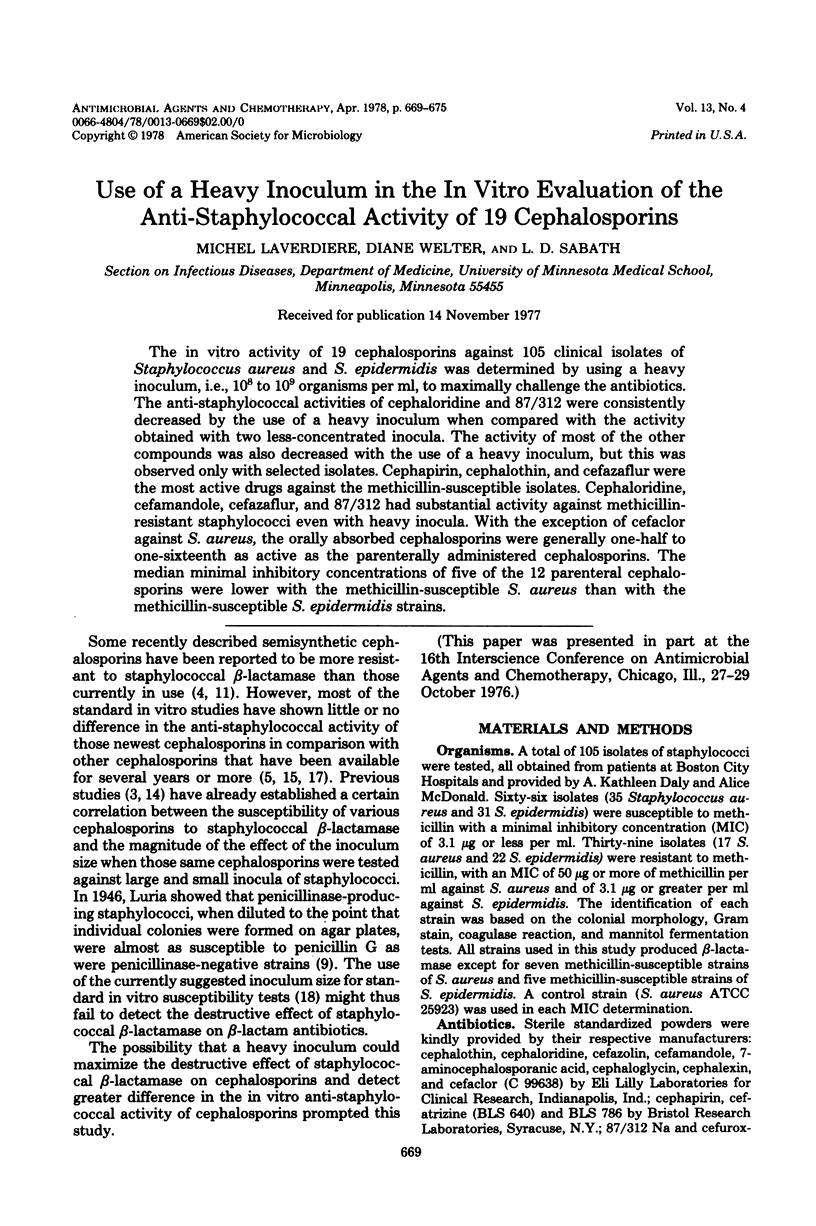
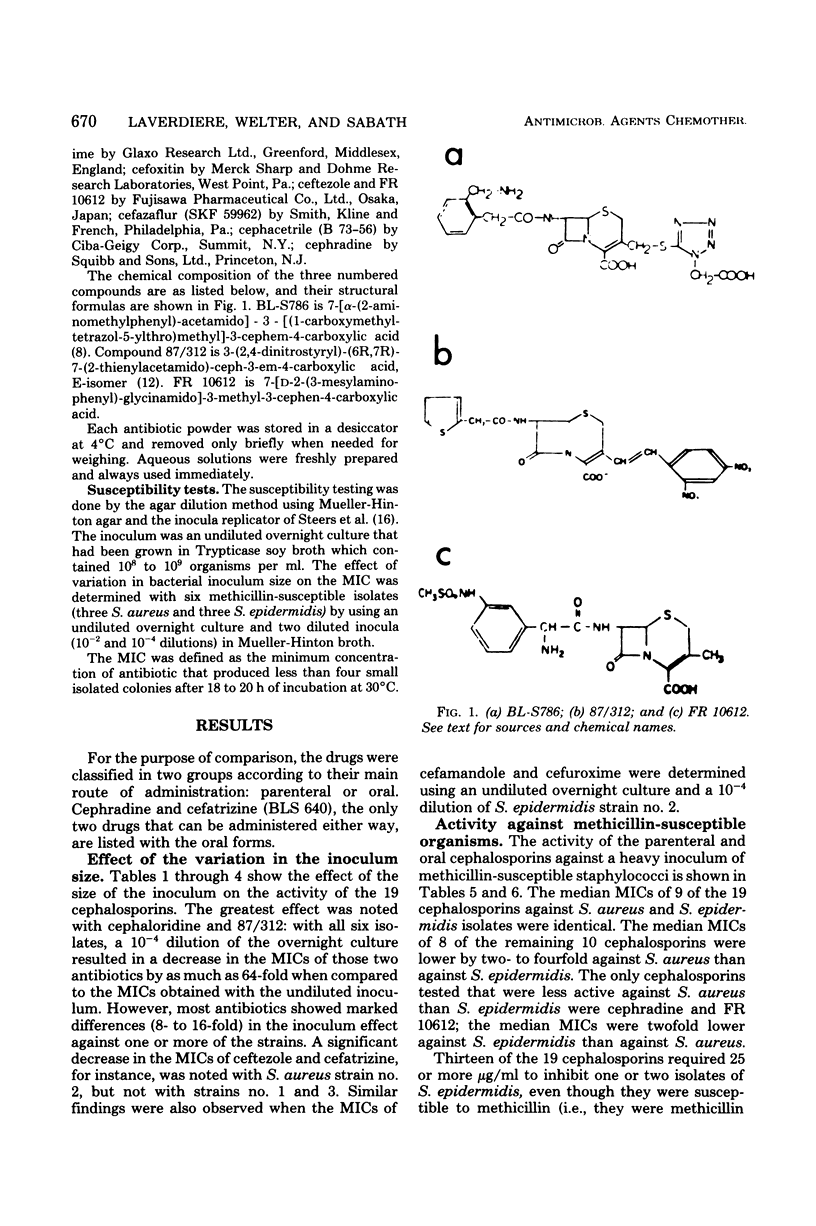
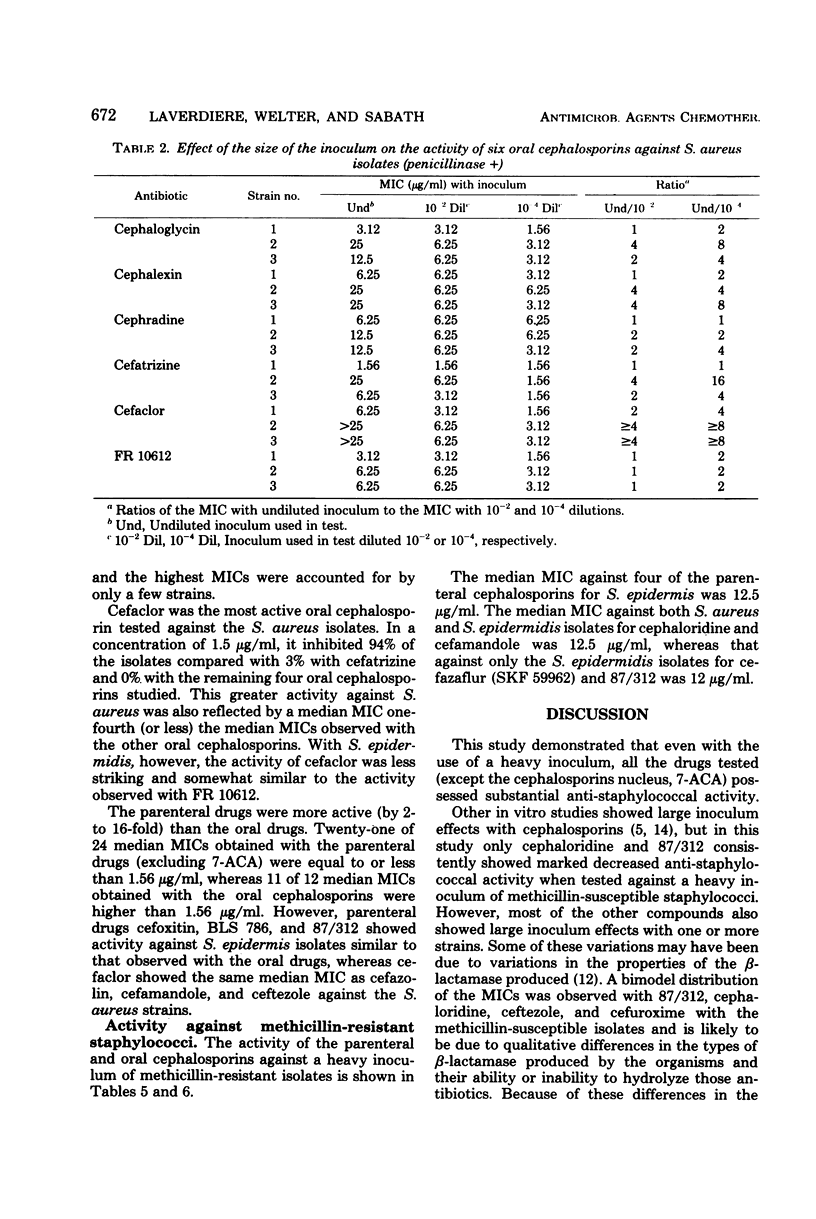
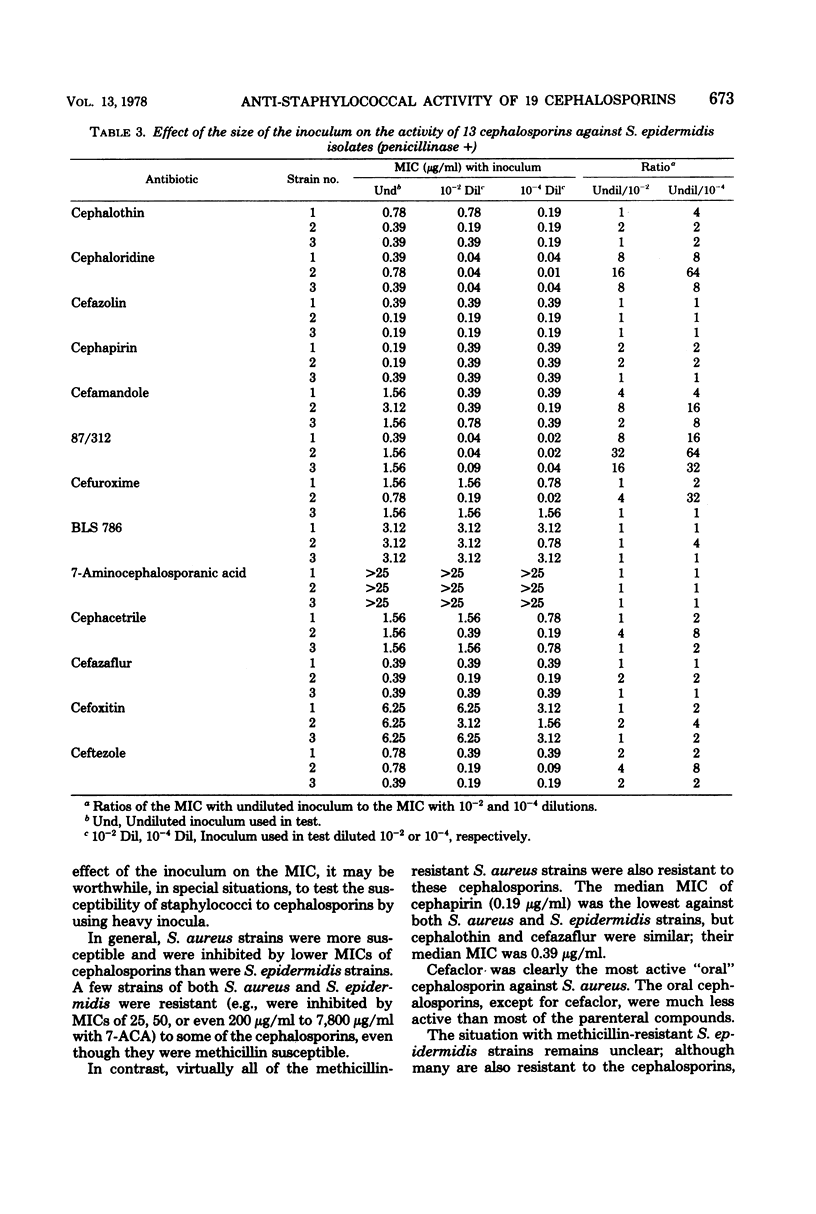
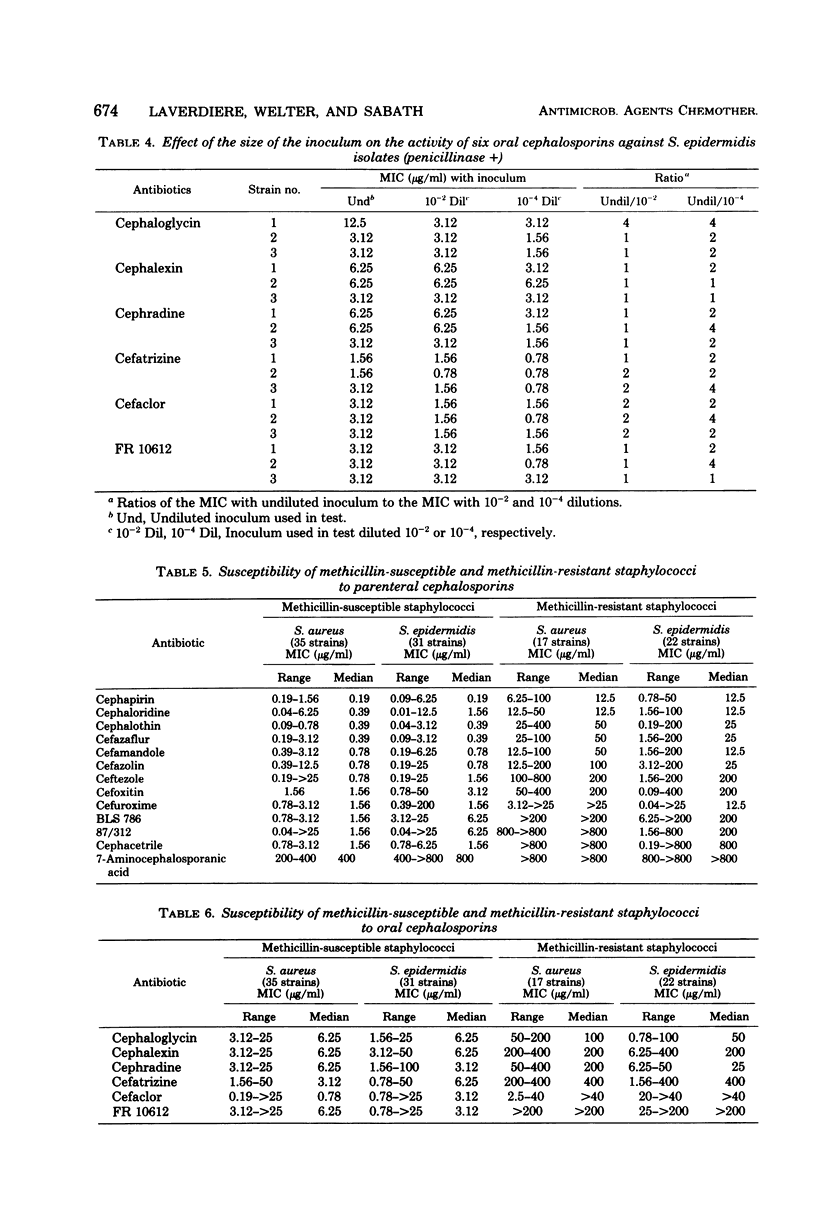
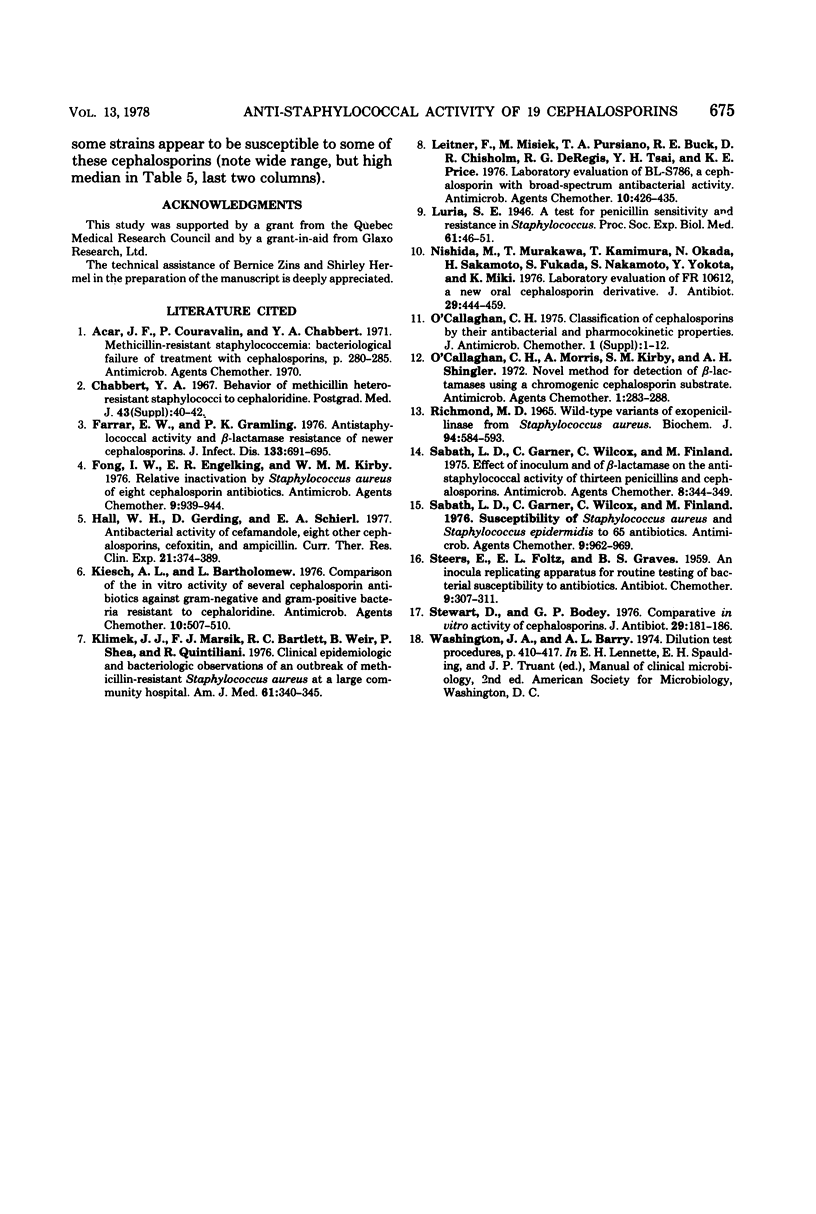
Selected References
These references are in PubMed. This may not be the complete list of references from this article.
- Chabbert Y. A. Behaviour of "methicillin hetero-resistant" staphylococci to cephaloridine. Postgrad Med J. 1967 Aug;43(Suppl):40–42. [PubMed] [Google Scholar]
- Farrar W. E., Jr, Gramling P. K. Antistaphylococcal activity and beta-lactamase resistance of newer cephalosporins. J Infect Dis. 1976 Jun;133(6):691–695. doi: 10.1093/infdis/133.6.691. [DOI] [PubMed] [Google Scholar]
- Fong I. W., Engelking E. R., Kirby W. M. Relative inactivation by Staphylococcus aureus of eight cephalosporin antibiotics. Antimicrob Agents Chemother. 1976 Jun;9(6):939–944. doi: 10.1128/aac.9.6.939. [DOI] [PMC free article] [PubMed] [Google Scholar]
- Kisch A. L., Bartholomew L. Comparison of the in vitro activity of several cephalosporin antibiotics against gram-negative and gram-positive bacteria resistant to cephaloridine. Antimicrob Agents Chemother. 1976 Sep;10(3):507–510. doi: 10.1128/aac.10.3.507. [DOI] [PMC free article] [PubMed] [Google Scholar]
- Klimek J. J., Marsik F. J., Bartlett R. C., Weir B., Shea P., Quintiliani R. Clinical, epidemiologic and bacteriologic observations of an outbreak of methicillin-resistant Staphylococcus aureus at a large community hospital. Am J Med. 1976 Sep;61(3):340–345. doi: 10.1016/0002-9343(76)90370-3. [DOI] [PubMed] [Google Scholar]
- Leitner F., Misiek M., Pursiano T. A., Buck R. E., Chisholm D. R., DeRegis R. G., Tsai Y. H., Price K. E. Laboratory evaluation of BL-S786, a cephalosporin with broad-spectrum antibacterial activity. Antimicrob Agents Chemother. 1976 Sep;10(3):426–435. doi: 10.1128/aac.10.3.426. [DOI] [PMC free article] [PubMed] [Google Scholar]
- Nishida M., Murakawa T., Kamimura T., Okada N., Sakamoto H. Laboratory evaluation of FR10612, a new oral cephalosporin derivative. J Antibiot (Tokyo) 1976 Apr;29(4):444–459. doi: 10.7164/antibiotics.29.444. [DOI] [PubMed] [Google Scholar]
- O'Callaghan C. H. Classification of cephalosporins by their antibacterial activity and pharmacokinetic properties. J Antimicrob Chemother. 1975;1(3 Suppl):1–12. doi: 10.1093/jac/1.suppl_3.1. [DOI] [PubMed] [Google Scholar]
- O'Callaghan C. H., Morris A., Kirby S. M., Shingler A. H. Novel method for detection of beta-lactamases by using a chromogenic cephalosporin substrate. Antimicrob Agents Chemother. 1972 Apr;1(4):283–288. doi: 10.1128/aac.1.4.283. [DOI] [PMC free article] [PubMed] [Google Scholar]
- RICHMOND M. H. WILD-TYPE VARIANTS OF EXOPENICILLINASE FROM STAPHYLOCOCCUS AUREUS. Biochem J. 1965 Mar;94:584–593. doi: 10.1042/bj0940584. [DOI] [PMC free article] [PubMed] [Google Scholar]
- Sabath L. D., Garner C., Wilcox C., Finland M. Effect of inoculum and of beta-lactamase on the anti-staphylococcal activity of thirteen penicillins and cephalosporins. Antimicrob Agents Chemother. 1975 Sep;8(3):344–349. doi: 10.1128/aac.8.3.344. [DOI] [PMC free article] [PubMed] [Google Scholar]
- Sabath L. D., Garner C., Wilcox C., Finland M. Susceptibility of Staphylococcus aureus and Staphylococcus epidermidis to 65 antibiotics. Antimicrob Agents Chemother. 1976 Jun;9(6):962–969. doi: 10.1128/aac.9.6.962. [DOI] [PMC free article] [PubMed] [Google Scholar]
- Stewart D., Bodey G. P. Comparative in vitro activity of cephalosporins. J Antibiot (Tokyo) 1976 Feb;29(2):181–186. doi: 10.7164/antibiotics.29.181. [DOI] [PubMed] [Google Scholar]


